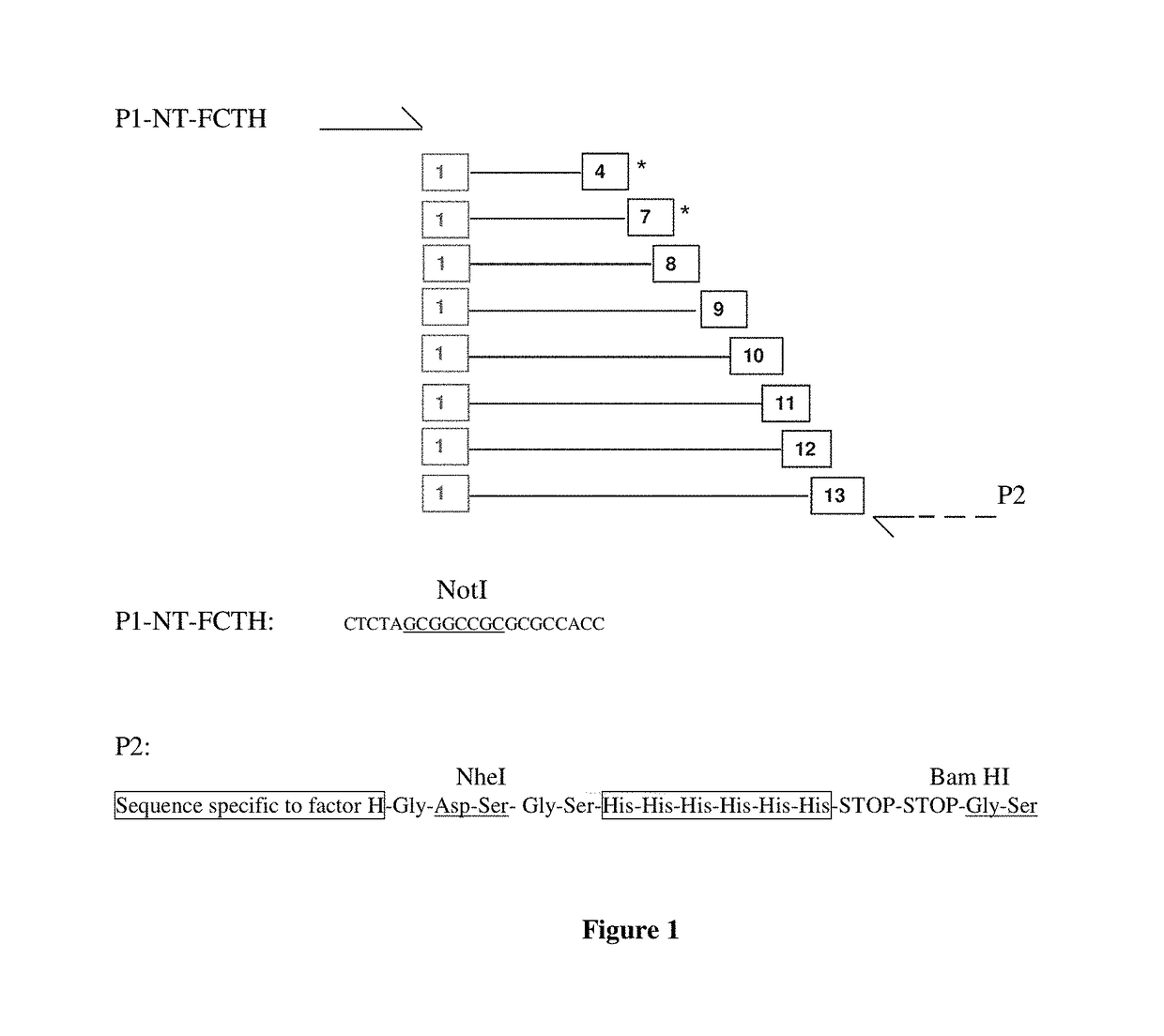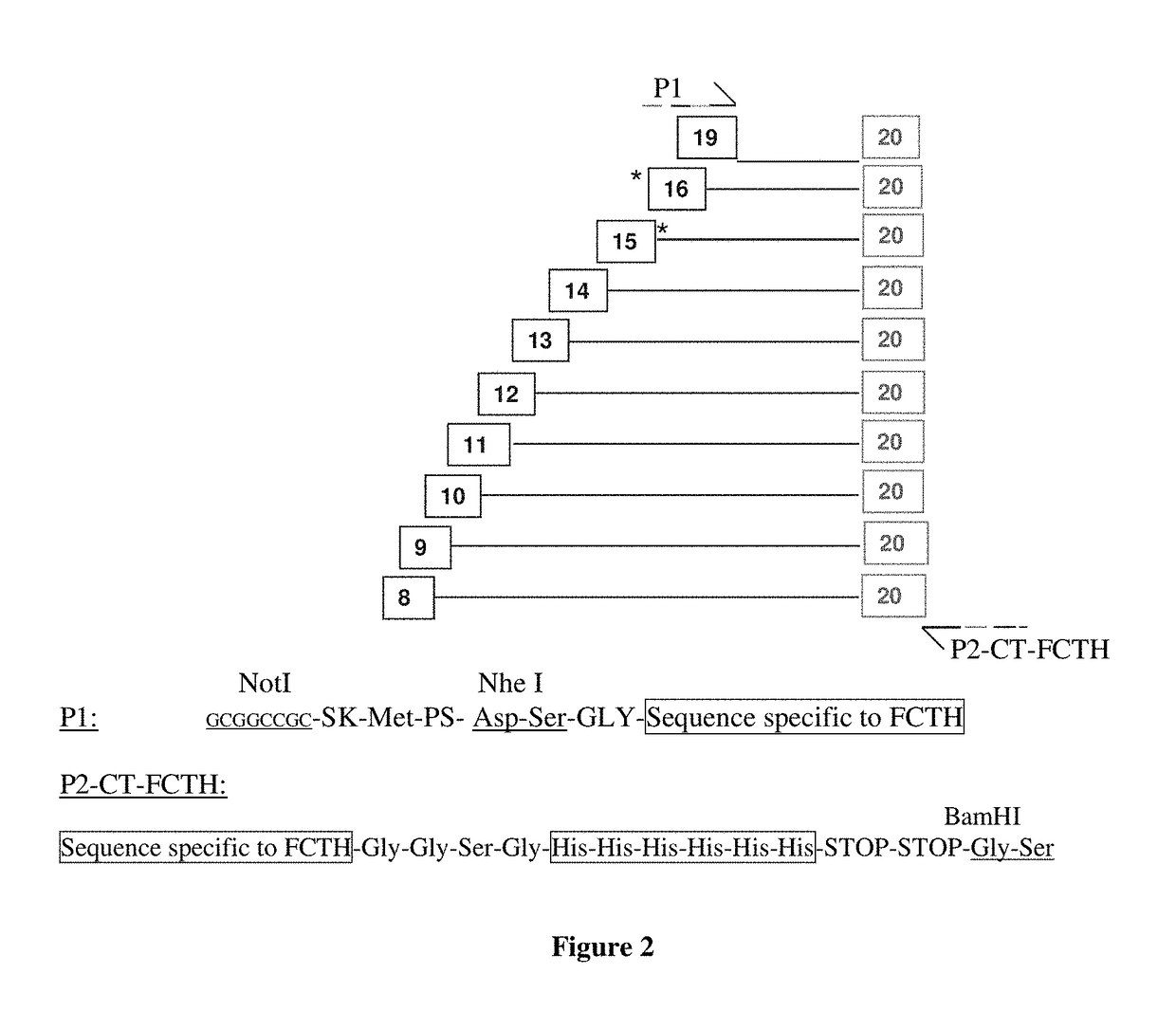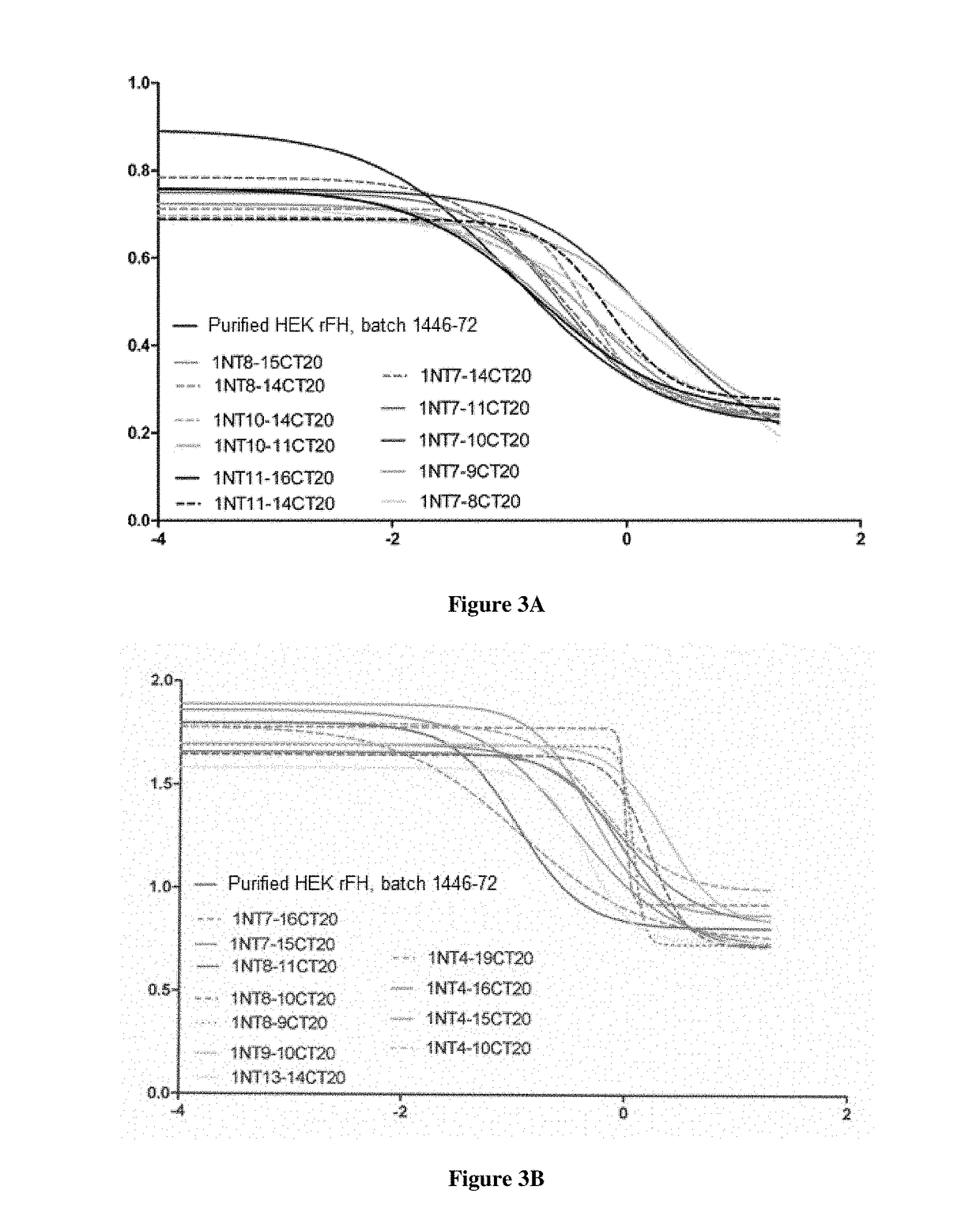Recombinant proteins having factor h activity
a technology of recombinant proteins and activity, applied in animal/human proteins, polypeptides with his-tag, peptide sources, etc., can solve the problem of limited use of factor h
- Summary
- Abstract
- Description
- Claims
- Application Information
AI Technical Summary
Benefits of technology
Problems solved by technology
Method used
Image
Examples
example 1
Construction of N-ter and C-ter Fragments of Factor H in pCEP4 Plasmid
[0149]The goal is to subclone in various forms the N-terminal and C-terminal fragments of the Y402 variant of factor H in an optimized version in pCEP4 expression vector. Both fragments will be supplemented at the 5′ end with a NotI site, the Kozak sequence and a signal peptide, and at the 3′ end with a His-TAG followed by the BamHI site, the difference being a NheI site located at the 3′ end for the N-ter fragments and at the 5′ end for the C-ter fragments. Explanatory diagrams will be described in the protocol provided below.
[0150]I / Construction of pCEP4-N-ter Vectors
[0151]1 / Construction of N-ter Fragments
[0152]N-ter fragments are constructed by PCR from the pCDNA2001neo-MD3Y vector. This vector corresponds to the pCDNA2001neo vector containing the nucleic acid represented by the sequence SEQ ID NO: 90, which is an optimized sequence encoding the Y402 variant of factor H comprising an artificial signal peptide S...
example 2
Construction of Factor H Vectors Combining the N-ter and C-ter domains
[0196]From the 8 pCEP4-1NTX vectors and the 10 pCEP4-XCT20 vectors we construct 59 vectors combining the N-ter and C-ter fragments, containing obligatorily at least the SCR1-4 N-terminal domains and the SCR19-20 C-terminal domains to which are added a variable number of SCR domains in the central portion of the molecule.
[0197]First, we introduce the 1NTX fragments present in the pCEP4 plasmid into the pCDNA2001neo vector (by NotI / BamHI digestion).
[0198]Second, we introduce into the pCDNA2001neo-1NTX vectors the XCT20 fragments (by NheI / BamHI digestion).
[0199]We thus obtain 59 plasmid constructs which correspond to the 59 1NTX-XCT20 combinations of the FH fragments. These sequences are present in the pCDNA2001neo vector, which permits stable expression of these molecules in the PER.C6 cell line. To facilitate the screening and production work, 59 FH 1NTX-XCT20 fragments are extracted from the pCDNA2001neo vector by...
example 3
Determination of the Concentration and the Molecular Mass of FH Fragments Present in the Supernatants of HEK 293F Cells after 7 Days of Production in Batch Mode
3.1: Transient Transfection into HEK 293F Cells for Transient Production of Recombinant FH Fragments
[0226]1-Transient transfection:
[0227]The day before the transient transfection, HEK 293F cells are subcultured at a cell concentration of 7E5 vc / ml. The cell density and the viability of the HEK 293F cells are measured the day of the transfection. A volume of culture corresponding to 30E6 cv / ml is centrifuged. The supernatant is discarded and the cell pellet is taken up in 28 ml of F17 culture medium (Invitrogen), transferred to a 250 ml Erlenmeyer flask and incubated at 37° C.
[0228]2-Formation of the transfection agent / DNA complex in a 2:1 ratio:
[0229]The transfection agent and the DNA corresponding to the pCEP4 vector containing one of the FH fragment sequences are prepared in OptiMEM medium (Invitrogen) as follows:[0230]Ad...
PUM
 Login to View More
Login to View More Abstract
Description
Claims
Application Information
 Login to View More
Login to View More - R&D
- Intellectual Property
- Life Sciences
- Materials
- Tech Scout
- Unparalleled Data Quality
- Higher Quality Content
- 60% Fewer Hallucinations
Browse by: Latest US Patents, China's latest patents, Technical Efficacy Thesaurus, Application Domain, Technology Topic, Popular Technical Reports.
© 2025 PatSnap. All rights reserved.Legal|Privacy policy|Modern Slavery Act Transparency Statement|Sitemap|About US| Contact US: help@patsnap.com



